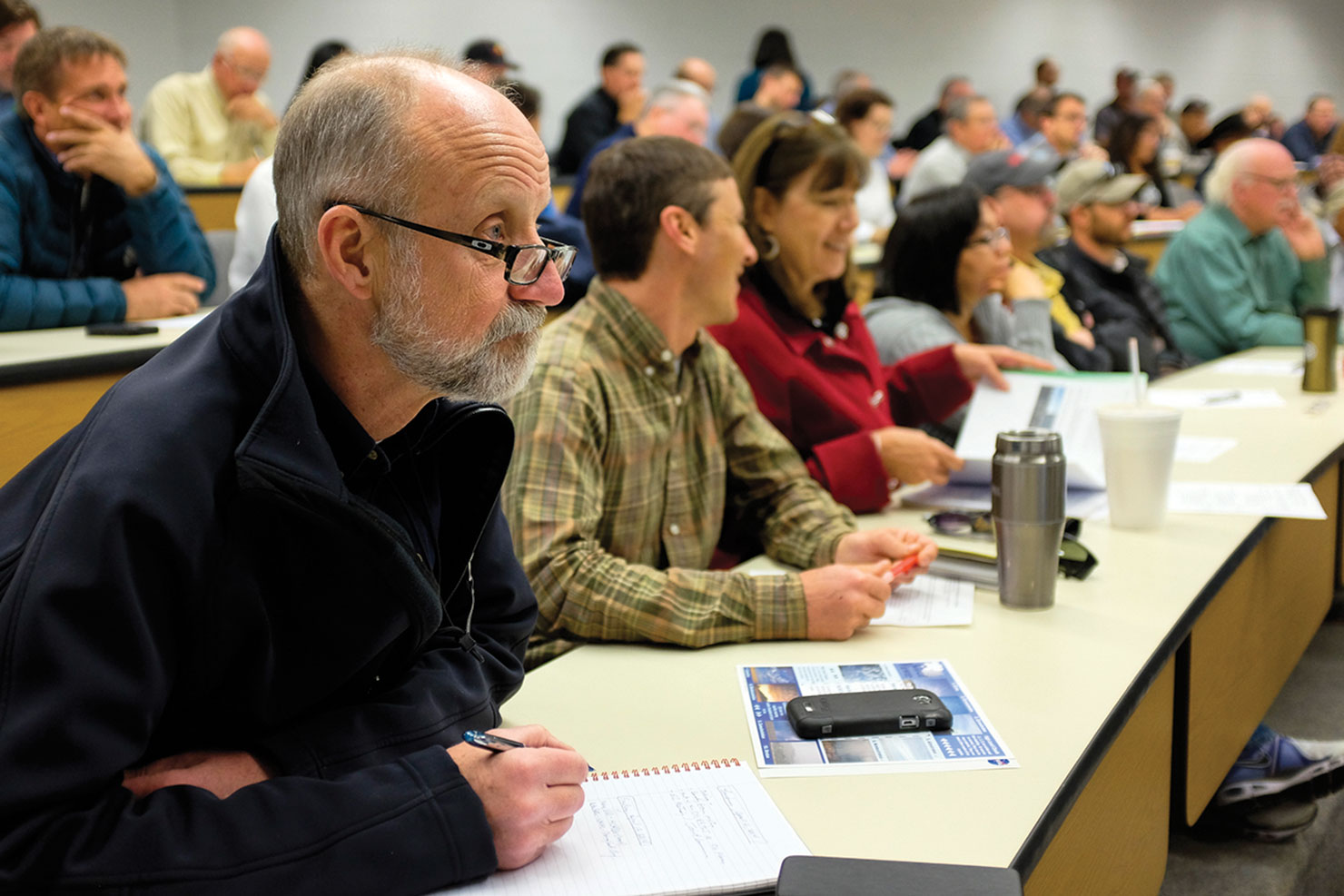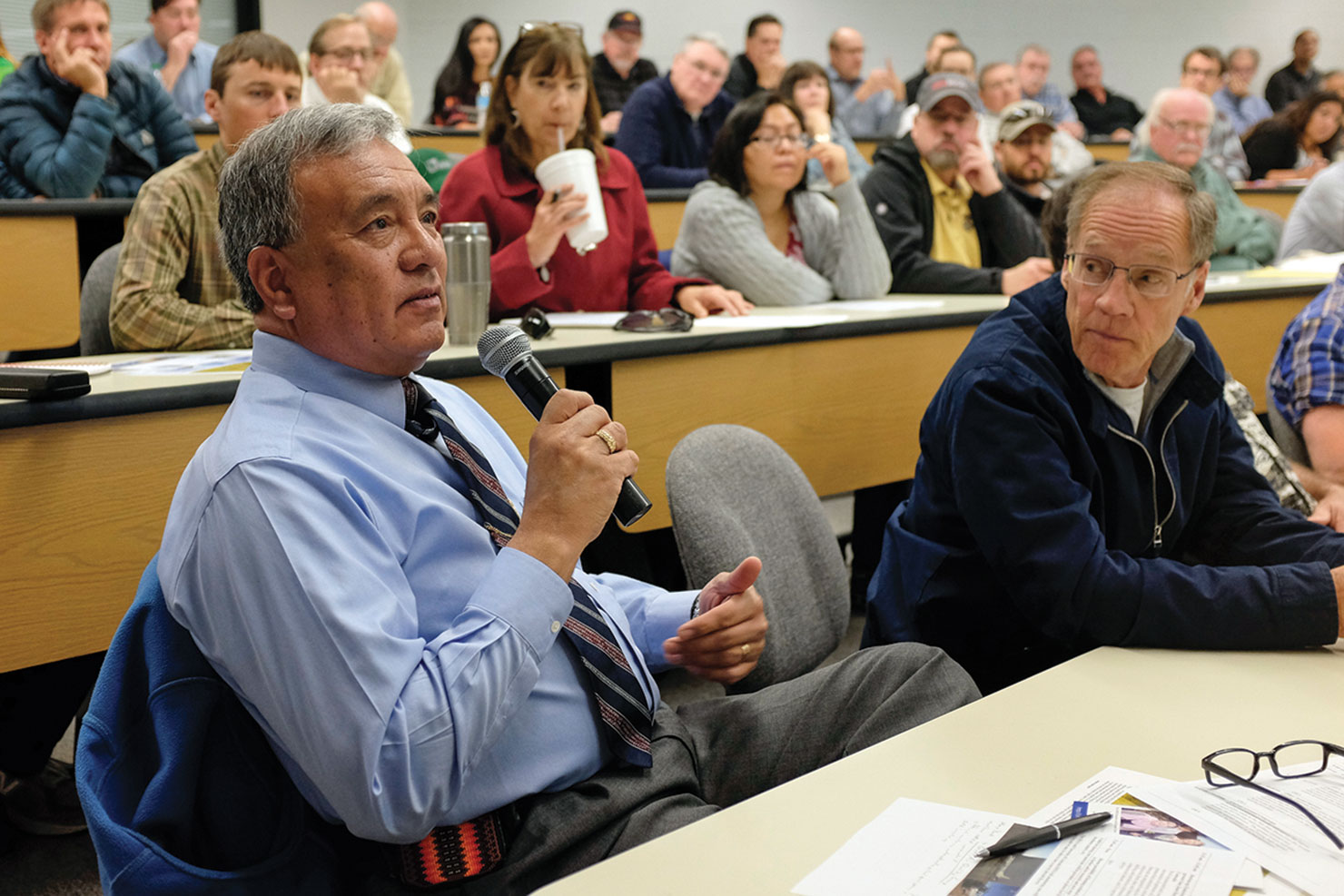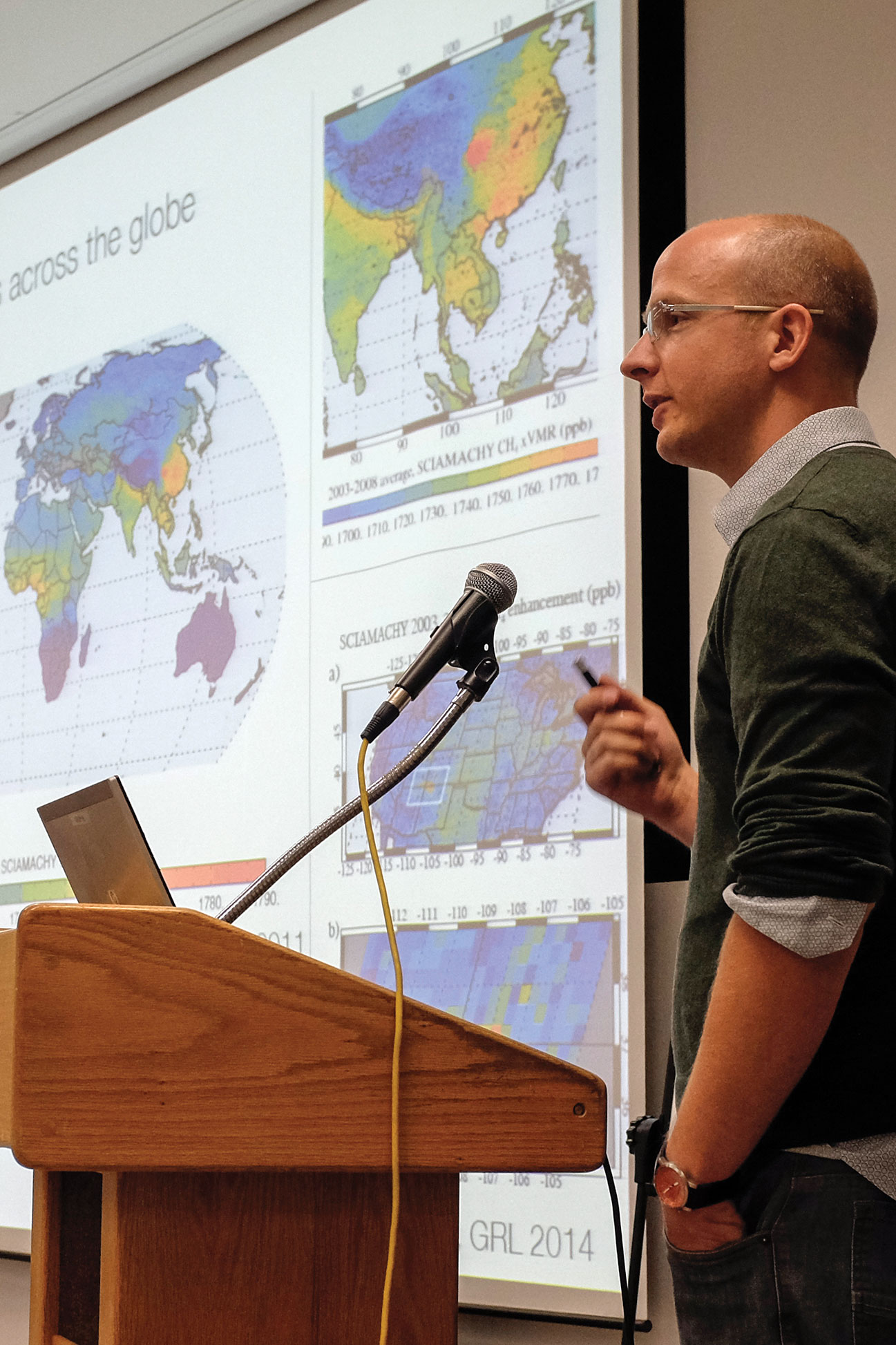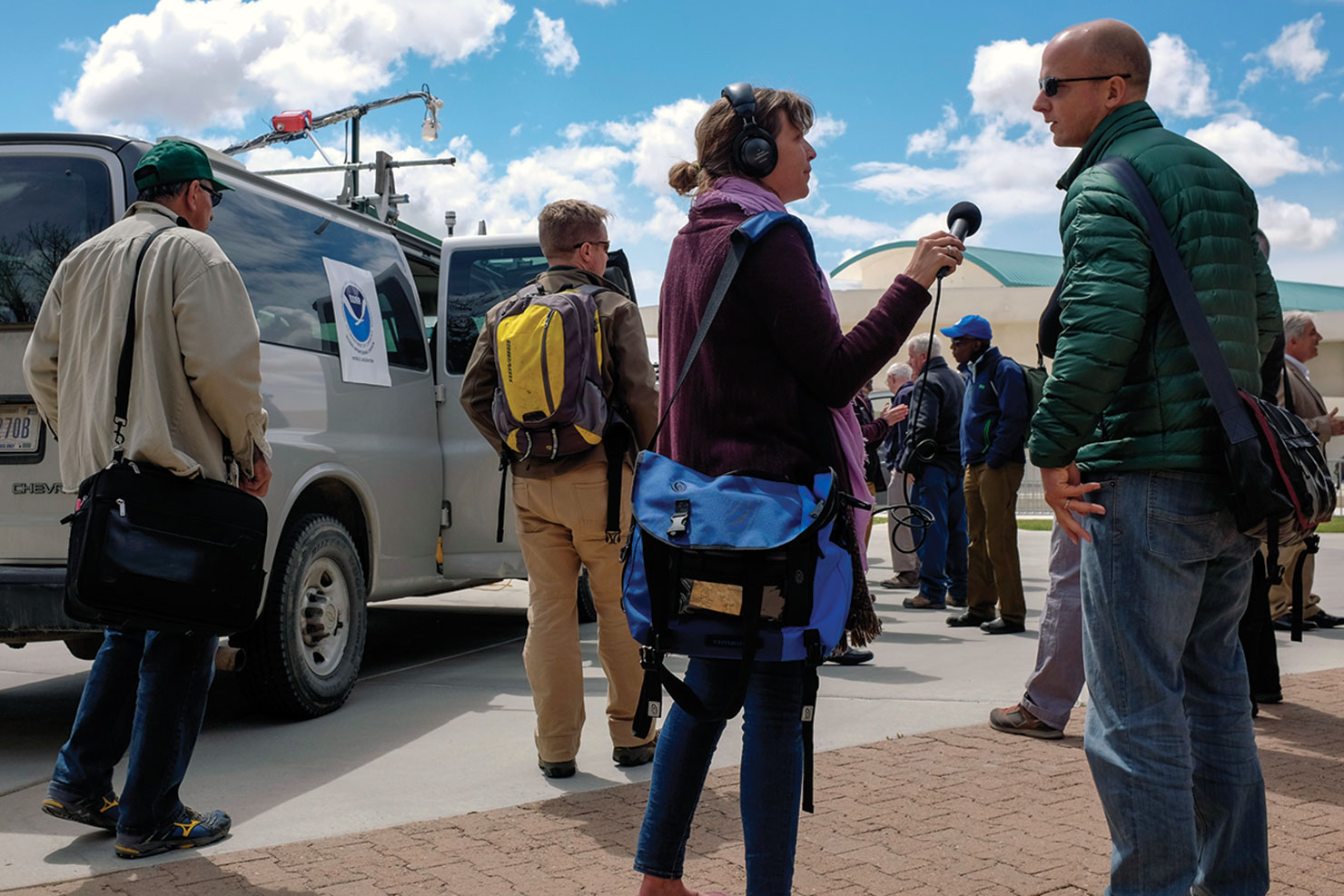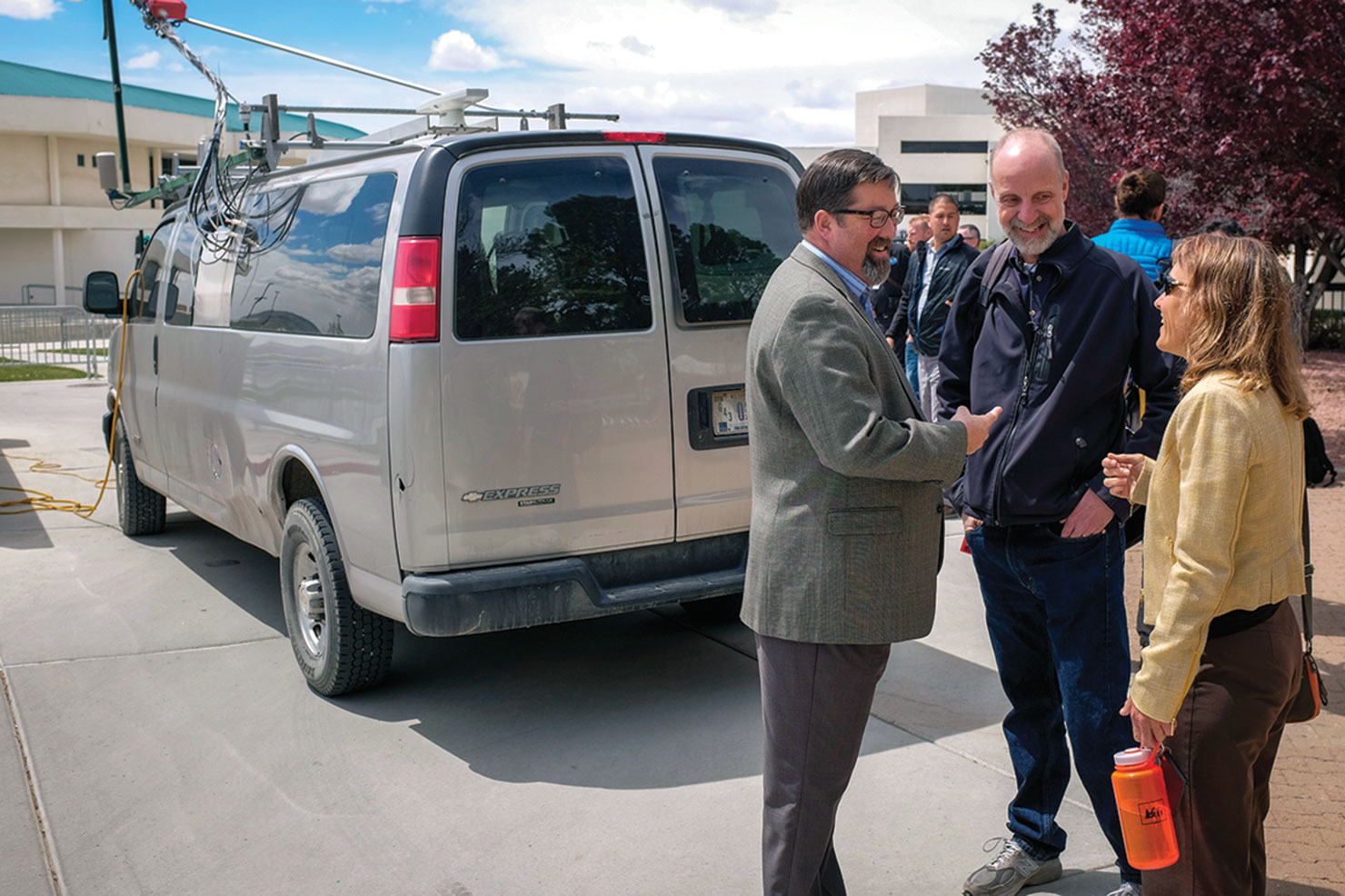Scientists and researchers specializing in air quality spoke to a full house during a public science forum on regional methane studies on Friday, April 17, held at San Juan College, Farmington, New Mexico.
Satellite data spanning almost a decade has shown significant amounts of methane gas buildup in the Four Corners region, prompting scientists to study the region in an attempt at pinpointing the source of this greenhouse gas linked to global warming and climate change.
Experts from NASA, National Oceanographic Atmospheric Administration (NOAA), and the Universities of Colorado and Michigan led presentations during Friday’s forum. Previous analysis of satellite data from 2003 to 2009 and the introduction of an in depth study of regional air quality were the primary topics of discussion.
“It was awesome, it was a great turnout,” said Chris Ellis of the Southern Ute Air Quality team who attended Friday’s forum.
“[What I really appreciated was that] they said it was for science,” Ellis said.
Researchers will collect data throughout the region during the month of April using both aircraft and ground vehicles in an attempt to pinpoint sources of methane, while creating data specific to the Four Corners, which can then be analyzed alongside current satellite data.
“There is a series of studies, where we want to improve and refine that data,” Eric Kort said, a climate expert with the University of Michigan.
Kort is responsible for publishing the original study on the high methane activity noted throughout the Four Corners Region.
“We find [methane levels in] the Four Corners to be 10 percent of the United State’s [totals],” said Kort.
“There are a range of [known] sources from the region,” said Kort, “[This area is] the number one coal bed methane producer in the United States.”
“The question I am really interested in is ‘what else is in the air’,” said Gabrielle Pétron, a climate scientist from the University of Colorado Boulder, working in NOAA’s Earth System Research Laboratory.
Measuring isotopes may be the key to this, and will ultimately help us better evaluate what actions to take going forward in terms of mitigation.
“Isotopes are like fingerprints that tell us where the methane comes from,” Pétron said.
“Luckily we have been working with state level [organizations] and tribes to [gain better information] on the region,” Pétron said.
NASA is also providing their own scientific aircraft to help with monitoring efforts in the San Juan Basin.
“[We are] mapping at much finer spatial scales then satellites can do, “ said Christian Frankenberg, a green house gas scientist working with NASA’s Jet Propulsion Laboratory.
“We will be augmenting data with additional aircraft,” said Frankenberg. “We measure with hundreds of thousands of colors using high performance spectrometers.”
“This is a global issue, rather than a regional issue,” Frankenberg said.
The forum ended with an opportunity for an open mic question and answer session from the audience, ranging from concerned community members and public officials, along with representatives from local environmental agencies and energy groups.
Following the forum, attendees were encouraged to inspect NOAA’s ground vehicles, or NOAA Mobile laboratory’s, which were parked on campus for the event. Gabrielle Pétron and Eryka Thorley, who are conducting the field samples, were also on hand to answer questions specific to the ongoing study and the state-of-the-art equipment built into the vehicles for regional data collection.
While collection of data for this specific study will be concluded by the first of May, definitive results will not be available for nearly a year.
In the months to come scientists will complete lab work, integrate data, then the results of this study will be reviewed by researchers and peers from around the scientific community before it is published.
“We are excited to find out what we learn, but it doesn’t happen instantly,” Kort said.

